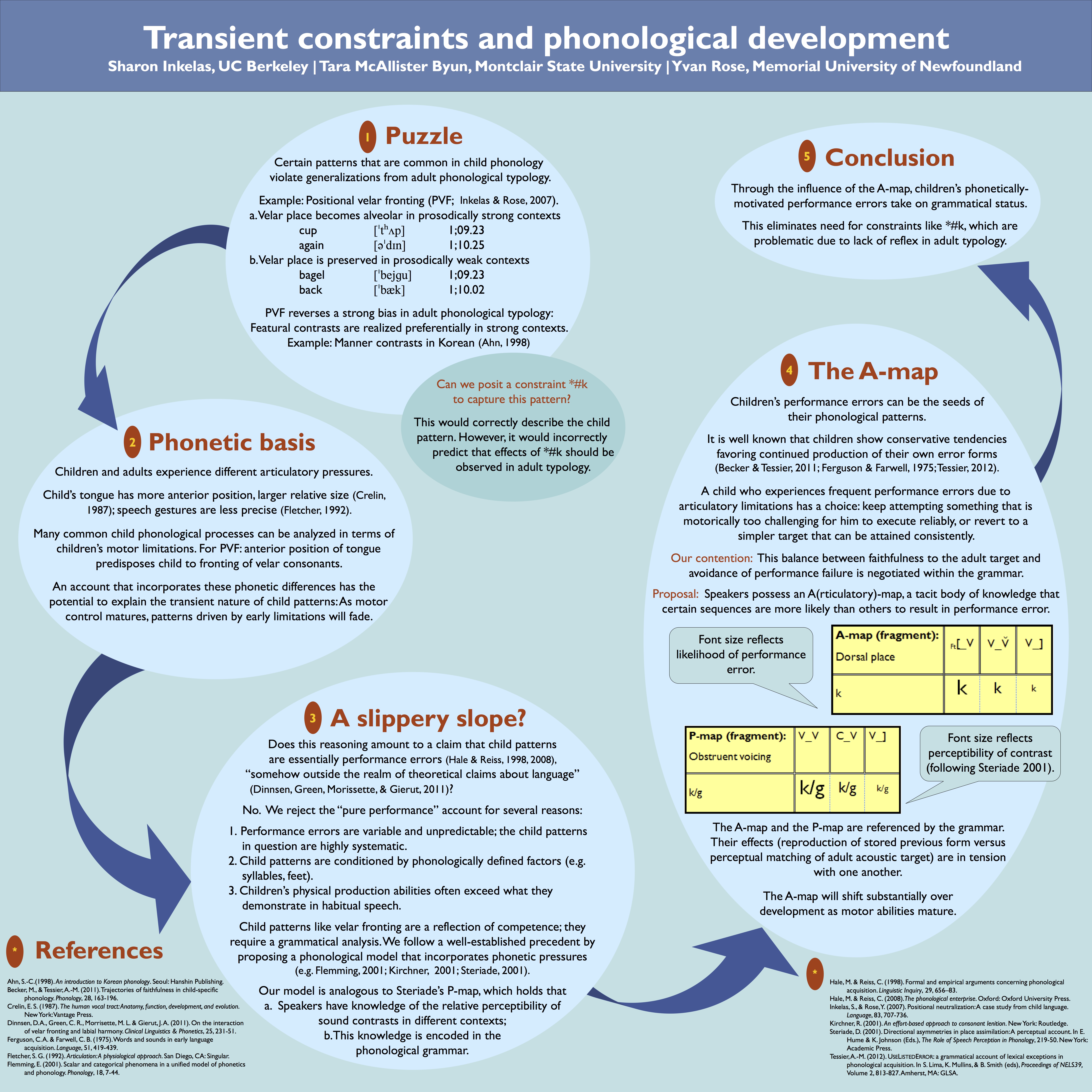Sharon Inkelas - Research InterestsMorphology. Since my study of Nimboran affix ordering in 1993 I have been interested in how seemingly arbitrary conditions on affix ordering interact with - and shed light on - general cross-linguistic principles of morphological combinatorics. With Gabriela Caballero (UC San Diego) I am developing Optimal Construction Morphology, in which blocking and multiple exponence effects emerge from the lexicon in a bottom-up, production-oriented, optimizing model of word formation. Our first paper on OCM appeared in Morphology in 2013. I have also recently carried out exploratory work on affix informativity and affix order with Jem Orgun, presented as a poster in 2015 at the LSA; this work is reported and discussed in the context of Optimal Construction Morphology in a recent paper. Phonology-morphology interface. Since my 1989 Stanford University dissertation my research has focused on the phonology-morphology interface, looking at the implications of language-specific morphophonological generalizations for cross-linguistic generalizations and the models that capture them. I have published on cyclicity, cophonologies, and realizational morphology. In 2005, Cheryl Zoll and I published Reduplication: Doubling in Morphology with Cambridge University Press. My new book, The Interplay of Morphology and Phonology, was published in October 2014 by Oxford University Press; it provides an overview of this very rich area of inquiry. Phonology. With Stephanie Shih (UC Merced) I have been developing the theory of Agreement by Correspondence to handle local and long-distance (dis)harmony effects. Our NELS 44 paper applies ABC to local segment interations. In talks at mfm 21, NELS 43 and Phonology 2013 we propose Q theory, a new internal representation for segments which permits ABC to handle the behavior of contour segments in assimilation and dissimilation. In papers presented at ABC↔Conference, we develop ABC+Q analyses of tone and diphthongs which focus on the decomposition and distribution of subsegmental contours. An outgrowth of that work has been the application of weighted correspondence constraints in a MaxEnt Harmonic Grammar analyis of tone patterns in Mende. In papers presented at the Chicago Linguistics Society, the Annual Meeting on Phonology and the Annual Conference on African Linguistics, we argue that characterizing surface tone patterns via ABC+Q constraints provides an alternative and in some ways superior account, compared to traditional autosegmental analysis.
|
